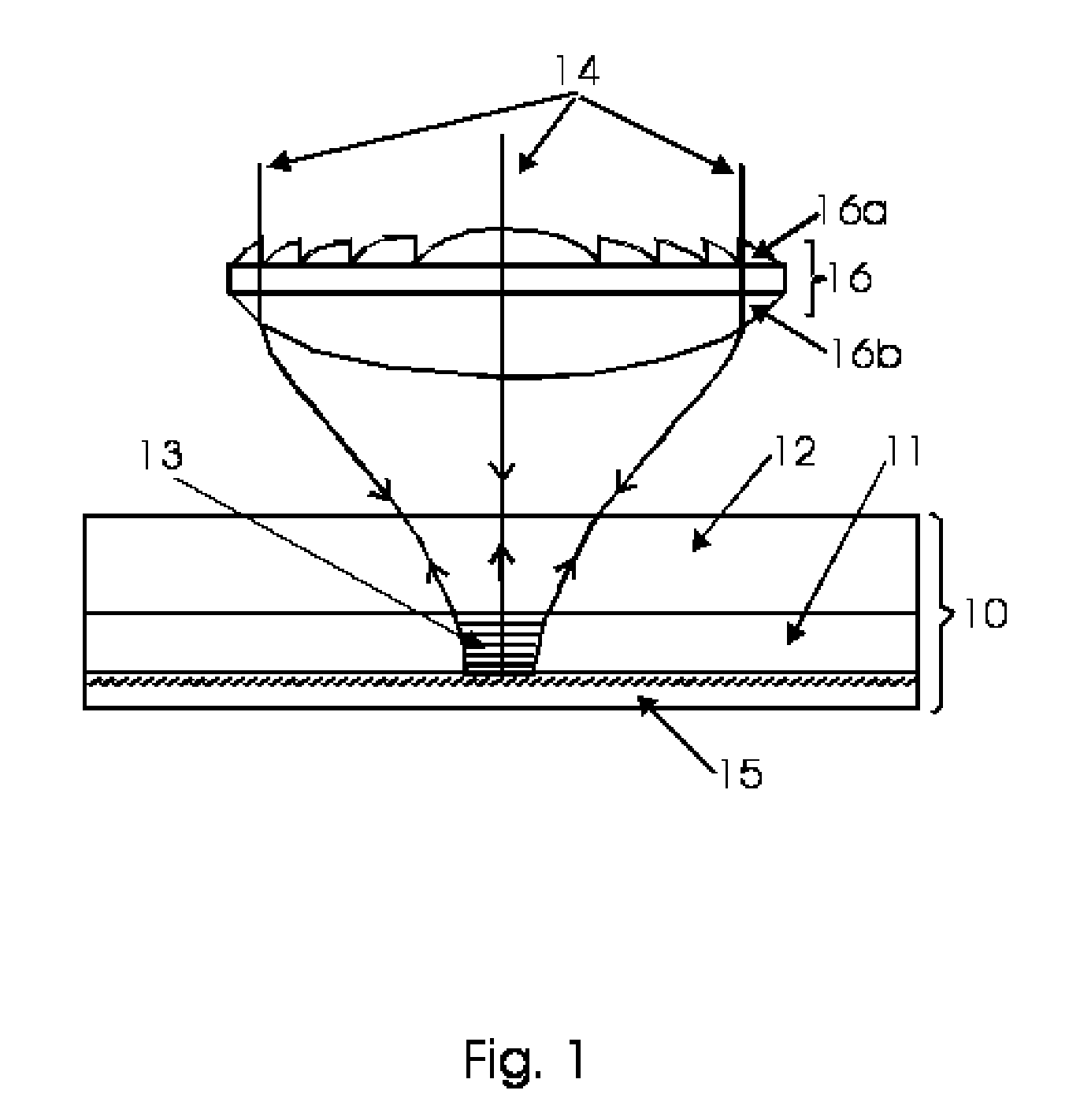Method and Device for High Density Optical Disk Data Storage
a high density, optical disk technology, applied in the direction of optical recording/reproducing/erasing methods, instruments, holographic processes, etc., can solve the problems of high density drives no longer removable, hard to achieve high density storage, and traditional magnetic disk storage has now reached its performance limitations, etc., to achieve fast access rate and high storage density
- Summary
- Abstract
- Description
- Claims
- Application Information
AI Technical Summary
Benefits of technology
Problems solved by technology
Method used
Image
Examples
Embodiment Construction
[0028]FIG. 1 is a schematic showing the recording of reflection grating in the recording medium using a pseudo non-diffracting beam with extended depth of focus property. The storage disk 10 can be created by coating a photosensitive film 11 on the substrate 12 with size of a standard CD / DVD disk. Dupont's photopolymer materials, such as HRF-700 and HRF-800, are examples of currently available candidates of recording medium. Reflection grating 13 can be recorded in the film by the illumination of a monochromatic or narrowband beam 14 along with a high reflectivity reflection mirror 15. This way, grating recording requires only one beam. It has minimal requirement on light coherent length since it minimized optical path difference between the incident beam and the reflected beam. Lower cost semiconductor laser or even narrowband spectral lines obtained from white light sources can be used. The illuminating beam first enters the recording medium 11 and then is reflected back from the ...
PUM
| Property | Measurement | Unit |
|---|---|---|
| diameter | aaaaa | aaaaa |
| wavelengths | aaaaa | aaaaa |
| wavelengths | aaaaa | aaaaa |
Abstract
Description
Claims
Application Information
 Login to View More
Login to View More - R&D
- Intellectual Property
- Life Sciences
- Materials
- Tech Scout
- Unparalleled Data Quality
- Higher Quality Content
- 60% Fewer Hallucinations
Browse by: Latest US Patents, China's latest patents, Technical Efficacy Thesaurus, Application Domain, Technology Topic, Popular Technical Reports.
© 2025 PatSnap. All rights reserved.Legal|Privacy policy|Modern Slavery Act Transparency Statement|Sitemap|About US| Contact US: help@patsnap.com



